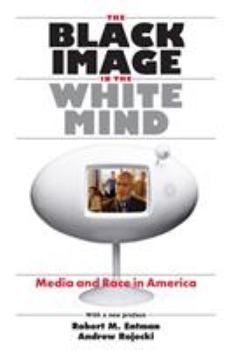The Black Image in the White Mind: Media and Race in America
(Part of the Studies in Communication, Media, and Public Opinion Series)
Select Format
Select Condition 
Book Overview
Living in a segregated society, white Americans learn about African Americans not through personal relationships but through the images the media show them. The Black Image in the White Mind offers the most comprehensive look at the intricate racial patterns in the mass media and how they shape the ambivalent attitudes of Whites toward Blacks. Using the media, and especially television, as barometers of race relations, Robert Entman...
Format:Paperback
Language:English
ISBN:0226210766
ISBN13:9780226210766
Release Date:December 2001
Publisher:University of Chicago Press
Length:340 Pages
Weight:1.05 lbs.
Dimensions:0.9" x 6.0" x 8.9"
Customer Reviews
1 rating
Long needed research.
Published by Thriftbooks.com User , 23 years ago
This is a very important book of research. Though written in sociologist language (lots of statistics and repetitition claims), this is one work that provides meticulous reserach about how the media help perpetuate racial stereotypes and prototypes in this society.As a teacher who is studying widely literature about the media, I found Entman and Rojecki's work useful for providing a lens to better analyze media representations of Black and White people. The authors contend that "Blacks now occupy a kind of limbo status in White America's thinking, neither fully accepted nor wholly rejected by the dominant culture. The ambiguity of Blacks' situation gives particular relevance and perhaps potency to the images of African Americans in the media." They show that though representations of Black people are quantitatively better than in the past, these representations still convey stereotypical or ambiguous images of Blacks. For example, though there has been sharp increase of Black male actors in movies, their roles still revolve around plots that focus on sports, crime, and violence. In the area of news media, Blacks are usually presented as sources of disruption, as victims, and as complaining supplicants. These type of images, they contend, help to maintain a gap in what they refer to as comity on the part of Whites toward Blacks and other racial minorities in this country. They provide a well known but much needed reiteration of why the media maintains these stereotypes and marginalizations of racial minorities: largely it's eoncomics."Media workers," they argue, "seek to make money for their organizations and advance their own careers. That means that they must stay vigilantly attuned to the presumed tastes of their target audiences. These creators operate in a professional culture and organizationl milieu that transmits lessons about what attracts and sells, what upsets and repels. Ratings and market research increasingly inform decisions, whether about news coverage or entertainment plots." They argue that political and White ethnocentricism play an equal role as wellThough critics may disagree with some of the authors'analysis and conclusions, this book deserves wide reading in media studies, communications, ethnic studies, and sociology courses. It should be read as a useful resource by concerned teachers and media activists.





